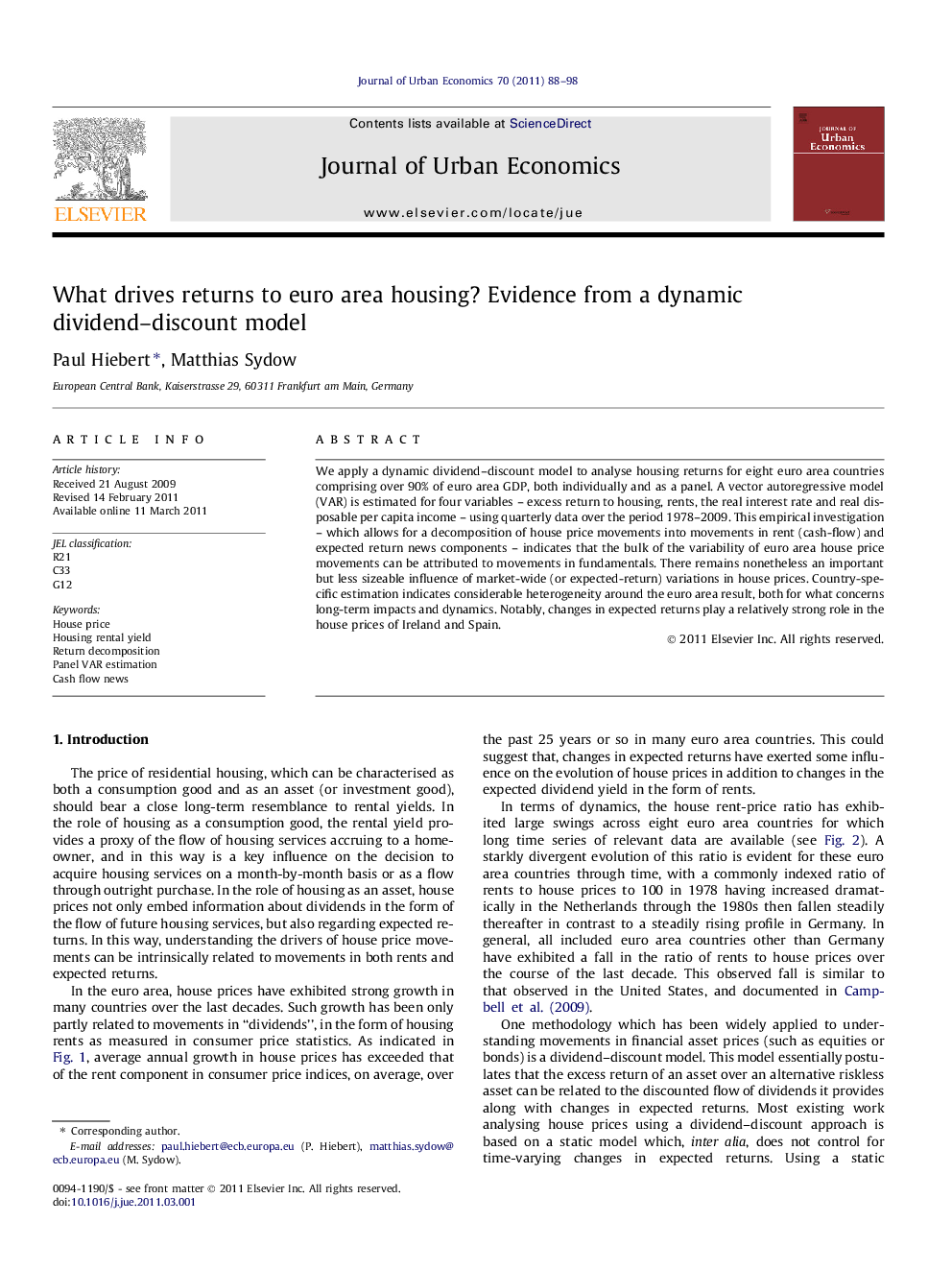| Article ID | Journal | Published Year | Pages | File Type |
|---|---|---|---|---|
| 971542 | Journal of Urban Economics | 2011 | 11 Pages |
We apply a dynamic dividend–discount model to analyse housing returns for eight euro area countries comprising over 90% of euro area GDP, both individually and as a panel. A vector autoregressive model (VAR) is estimated for four variables – excess return to housing, rents, the real interest rate and real disposable per capita income – using quarterly data over the period 1978–2009. This empirical investigation – which allows for a decomposition of house price movements into movements in rent (cash-flow) and expected return news components – indicates that the bulk of the variability of euro area house price movements can be attributed to movements in fundamentals. There remains nonetheless an important but less sizeable influence of market-wide (or expected-return) variations in house prices. Country-specific estimation indicates considerable heterogeneity around the euro area result, both for what concerns long-term impacts and dynamics. Notably, changes in expected returns play a relatively strong role in the house prices of Ireland and Spain.
